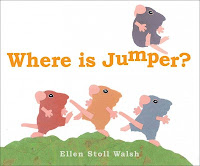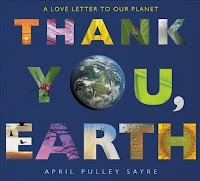Ed and I visited one of our outreach favorites last week! We love bringing our multi-sensory story time programs to the students at the Wing Lake Developmental Center, a year-round school that serves students, ages 3 - 26 years, in Oakland County with severe cognitive impairments (SCI) and severe multiple impairments (SXI). We try to provide as many sensory experiences as we can, so students with visual disabilities, motor difficulties, and other developmental disabilities can truly engage with the story time.
This visit focused on what animals do in the winter time. We chose to read Kate Messner's Over and Under the Snow, a picture book with so many wonderful sensory opportunities!
Here's our plan:
1. Hello (Talk about our picture schedule)
2. Talk about our theme: Animals in the Winter
"Today we are learning about what animals do in the winter time. What do you do in the winter? Do you like the cold? Snow? What do you like to eat when it is cold outside? Do you feel more sleepy, like some animals do?
3. Mindfulness exercise: "(Hibernating) Bear Breath"
Close your eyes and imagine you are a bear going inside your cave to get ready to sleep all winter.
Take a nice, deep breath in for 5 seconds (1,2,3,4,5) and then hold for 3 seconds (1,2,3).
Now breathe out for a count of five seconds (1,2,3,4,5) and then hold for 3 seconds (1,2,3).
Let's repeat.
Now open your eyes and notice how relaxed you feel, like that sleepy bear.
(source: Yoga Pretzels)
4. "(Where is) Sleepy Bear?"
Use two hands or two fingers and sing to tune of "Where is Thumbkin?"
Where is bear? Where is bear?
Here I am. Here I am.
How are you this winter?
Very tired, thank you.
Go to sleep. Go to sleep.
Say "Wake up bear!" and repeat
(source: Preschool Education)
5. Story with sensory experiences: Over and Under the Snow by Kate Messner
Projecting this story on the big screen, which is available in eBook format on OverDrive, helps our large groups to see the story better. We can also be hands-free to read and describe the illustrations while bringing all of our sensory experiences around to each student, with the help of teachers and aides in the room:
Page spread with owl and shrew
Rattling leftover leaves (rustling leaves in bags for each student to hear)
Sound of great horned owl (make owl sounds with students)
Tiny shrew following tunnel along the moss... (lift-the-flap touch/feel box covered in white flannel with moss and shrew/mole puppet inside for each student to see, touch, feel)
Page with deer mice under the snow
Mice cuddling up against the cold in a nest of feathers and fur (small baskets lined with "furry fabric" and feathers, with small mouse finger puppet to touch/feel)
Page with snowshoe hare under tree
Snowshoe hare smoothing her fur (pieces of white artificial "fur" to touch/feel)
Page with two beavers under the snow
Beavers gnawing on aspen bark (pieces of tree bark to touch/feel and smell)
Page spread with fox leaping over the snow
He heard a scritch-scritch-scratching along underneath (rustling cups of pea gravel around the students so they can hear the little mouse under the snow)
Page spread with full moon
A full moon lights my path to supper... (dimming the lights and shining bright daylight lamp to shine the "moonlight" for everyone to experience)
Page spread with bear under the snow and cross country skiing parent and child coming upon a bonfire over the snow with hot cocoa
(cups of hot cocoa brought near each student to smell the delicious aroma)
Page spread with feathery-soft snow flakes falling
(bowls of artificial snow brought to each student to touch/feel)
6. Song: "Sprinkle, Sprinkle, Little Snow" with ASL sign for snow
tune: Twinkle, Twinkle, Little Star
Sprinkle, sprinkle, little snow
falling down on us below.
Small and white and powdery,
such a joy for all to see.
Sprinkle, sprinkle, little snow
falling down on us below.
(source: Preschool Education)
7. Sensory activity: "Animals in winter" sensory bags
We had some of our volunteers pre-draw the outline of a tree and the ground level on gallon-size ziplock bags and use our di-cut machine to cut out owl, squirrel, and mouse shapes from foam. We gave each student one of these bags along with 3 scoops of our artificial snow, and then we added the animal shapes. Teachers and aides helped us to close up the bags so students could "smoooosh" the snow inside and move the animals around over and under the snow. We talked about which animals from the story (mice, squirrel) go over and under the snow and which animals stay above the snow (owl).








